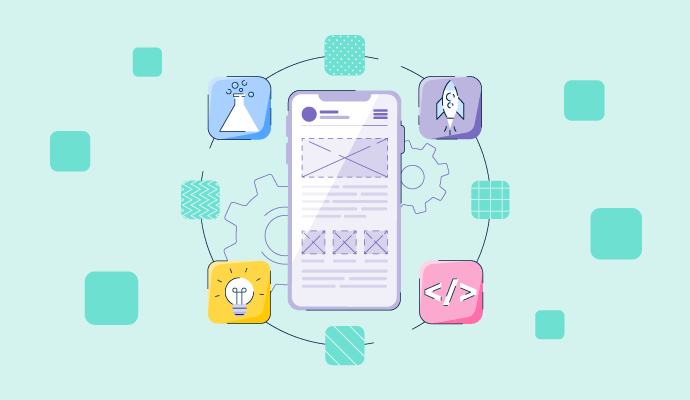What is application lifecycle management?
Application lifecycle management (ALM) is an integrated system of software, people, and processes that looks after a software development lifecycle from start to finish. It’s pivotal for releasing software and making timely deliveries.
ALM ensures stakeholders supply accurate information while their needs are met on time. Many businesses use an application lifecycle management software suite to keep stakeholders on the same page while giving better visibility. These tools make software development transparent and create an ecosystem to collaborate and complete tasks related to creating or improving software.
Types of application lifecycle management
Choosing the right software development methods is crucial to successful lifecycle management. Every method has pros and cons of its own.
- Waterfall methodology. Organizations following the waterfall methodology use the traditional development cycle. It’s a series of individual phases. Beginning with initiation, it moves on to design, building, and testing and ends with deployment. Each phase is performed sequentially and happens only when the previous phase is complete.
- Agile methodology. Agile follows short iterative and incremental development. It allows flexibility and collaboration during development, supporting continuous feedback and updates.
- DevOps. This strategy combines both development and operations teams to improve collaboration and efficiency. It streamlines the entire process, from development to deployment and beyond, by automating tasks and promoting continuous integration (CI) and delivery (CD).
- Lean ALM. Inspired by lean principles, lean ALM focuses on eliminating waste and maximizing value. Teams work to deliver value to customers while eliminating any unnecessary processes or delays.
Benefits of application lifecycle management
ALM is a combination of integrated processes that take care of the entire lifecycle of a product. It comes with a few expected benefits.
- Better quality. Structured frameworks for managing development processes ensure all software applications are thoroughly tested and evaluated at each stage. It makes them more reliable and user friendly.
- Efficiency. ALM identifies inefficiencies or bottlenecks and helps eliminate them. It shows significant improvements in expediting development and deployment.
- Informed decision making. ALM handles conflicts and changing stakeholders' requirements. It affects scope, quality, and delivery. ALM gives stakeholders the ability to make competent decisions.
- Compliance. Users can create a traceability matrix while developing a product that tracks whether a requirement was met. It allows users to be on track with compliance throughout the development.
- Visibility. As cross-functional groups are brought closer with ALM software, developers and teams are on the same page.
Stages of application lifecycle management
ALM gives visibility to the entire lifecycle process. Based on the methodology used, ALM is split into various phases. There are six stages that a developer needs to know.
- Planning and design. Developers discuss the purpose and objectives with stakeholders, including the estimated budget and application development timeline. Various teams collaborate to get insights into the detailed tasks needed for development’s completion.
- Governance. Handling compliance management and application governance is crucial for seamless data movement within the application. This step looks after initiating data security strategies and recognizing necessary compliances.
- Application development. Once the above steps are completed, it’s time to code the application. Developers must create codes ensuring smooth communication between the user interface and the backend and implement reasonable database solutions for the applications.
- Software testing and quality assurance. The testing team creates a standardized environment to review the application. It helps identify the performance, scalability, and usability of the application.
- Deployment. The team optimizes the application before deployment. This phase determines the future of the application such as release management, which defines future requirement management.
- Maintenance and continuous improvement. Developers employ the feedback and work on enhancing the app's ability.
Application lifecycle management vs. software development lifecycle
Application lifecycle management handles requirements management, software architecture, change management, continuous integration (CI)/continuous deployment (CD), project management, quality assurance, etc., to develop successful products. It contains a set of processes that connect stakeholders through various application management stages.
ALM focuses on all aspects of an application, from beginning to end. ALM tools help track the application’s evolution and provide the human or technical resources needed to maintain the project.
Software development lifecycle (SDLC) manages a software development plan. It includes system evaluation, design, development, testing, implementation, and training. SDLC encompasses the software development process but does not denote a specific approach. Here, development cycles may repeat often.
Both ALM and SDLC tools help to automate and manage processes. While SDLC tools facilitate software design, coding, testing, etc., ALM tools combine SDLC functions and business management processes and controls.
Learn more about launching new products with agile project management.

Sagar Joshi
Sagar Joshi is a former content marketing specialist at G2 in India. He is an engineer with a keen interest in data analytics and cybersecurity. He writes about topics related to them. You can find him reading books, learning a new language, or playing pool in his free time.

